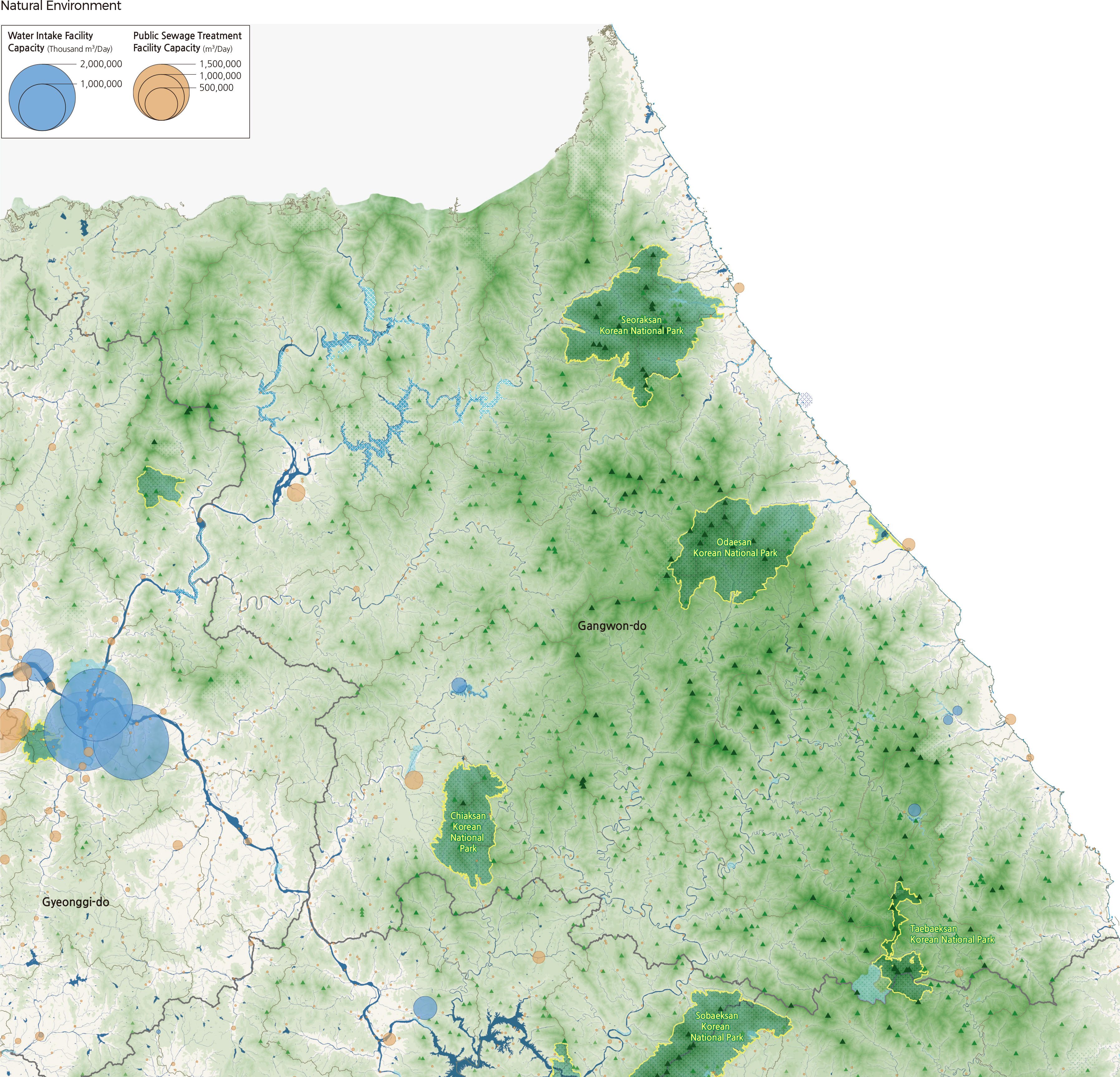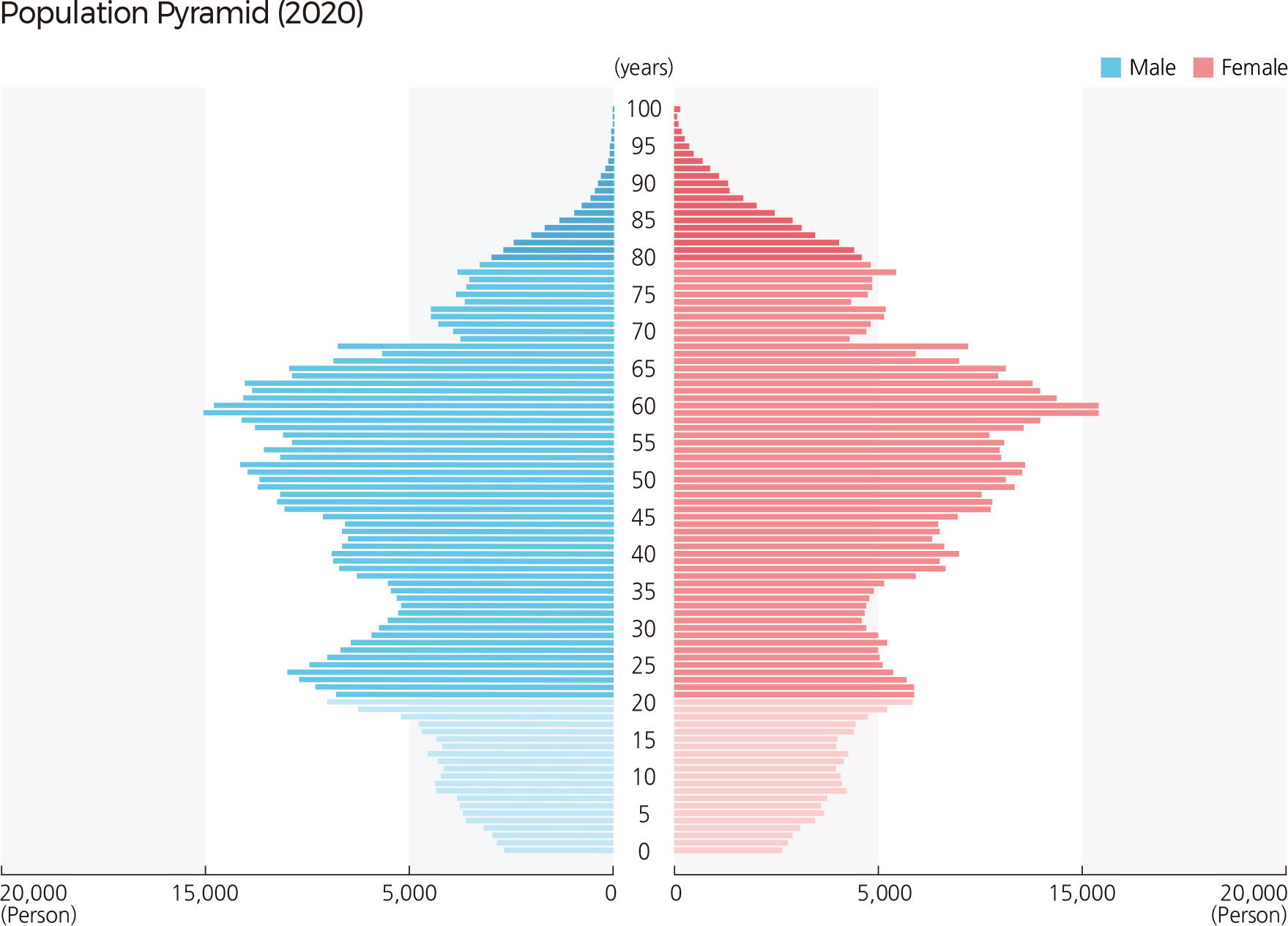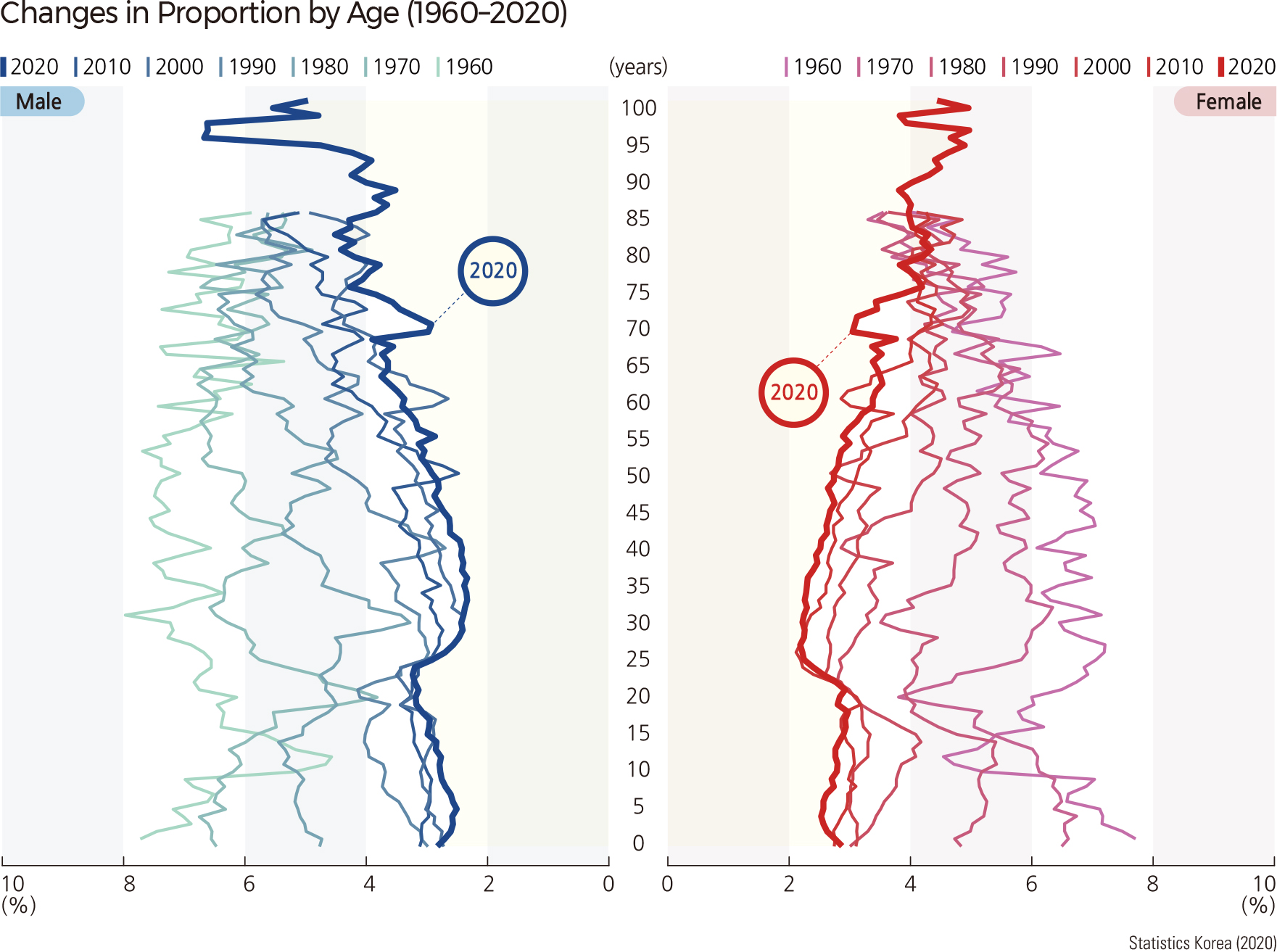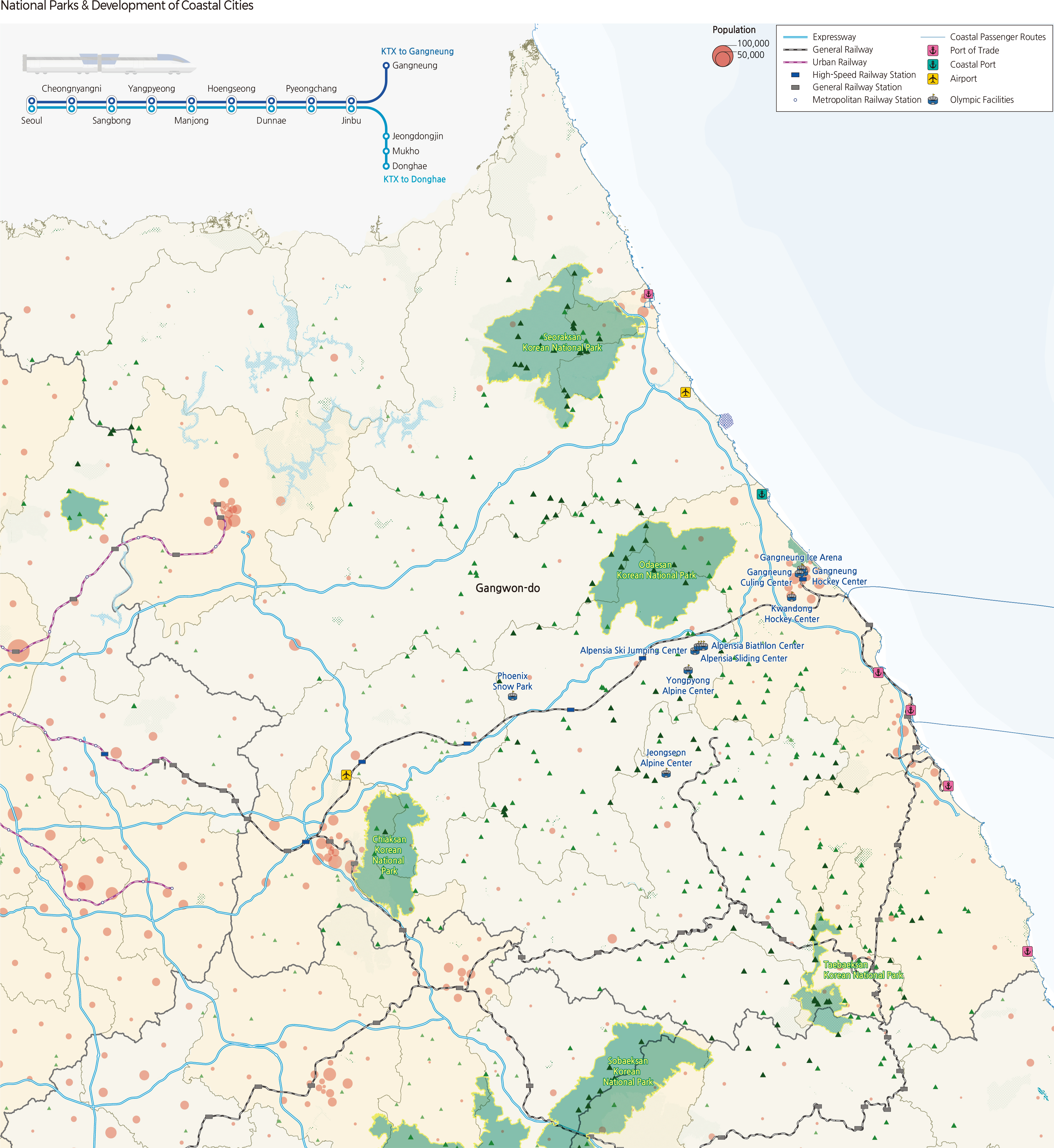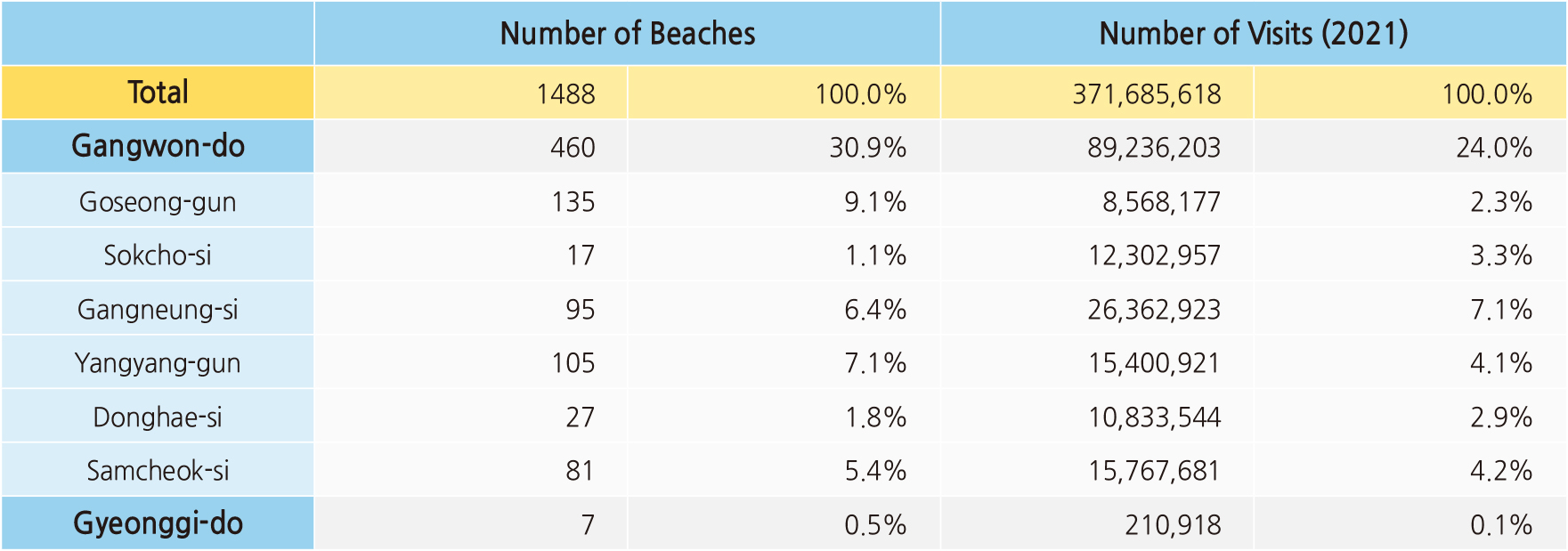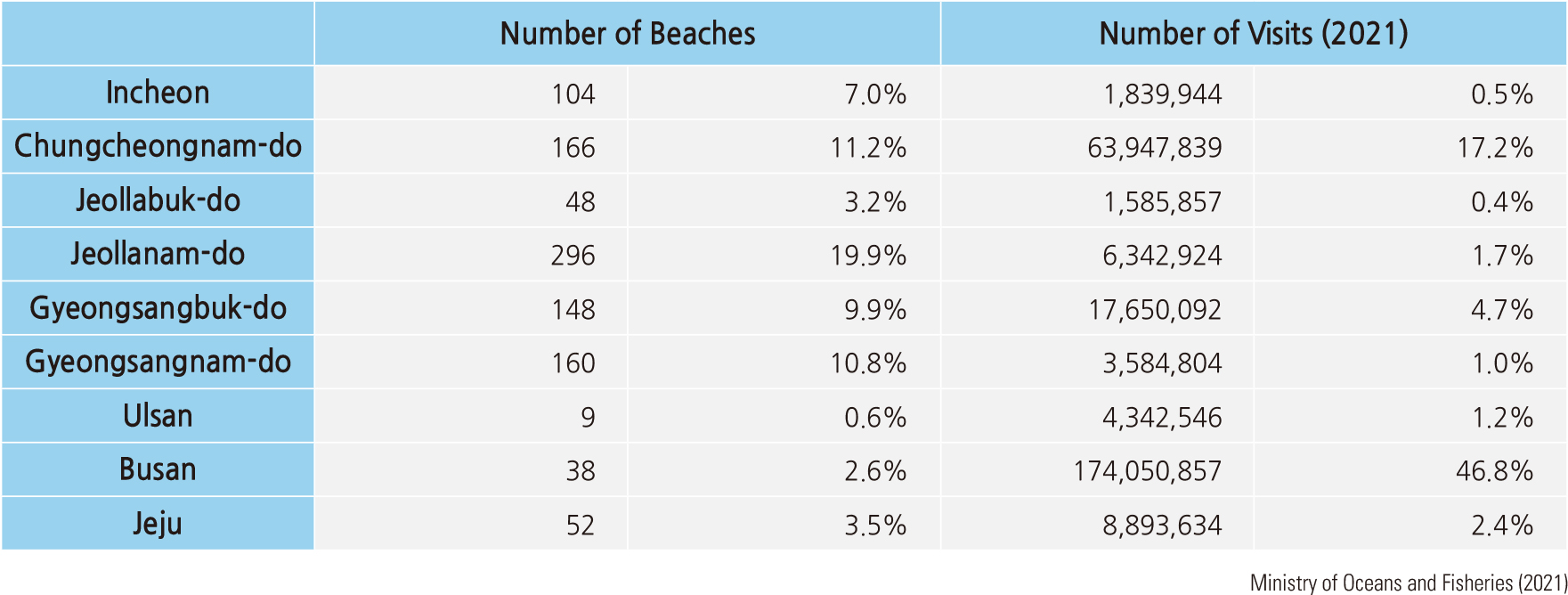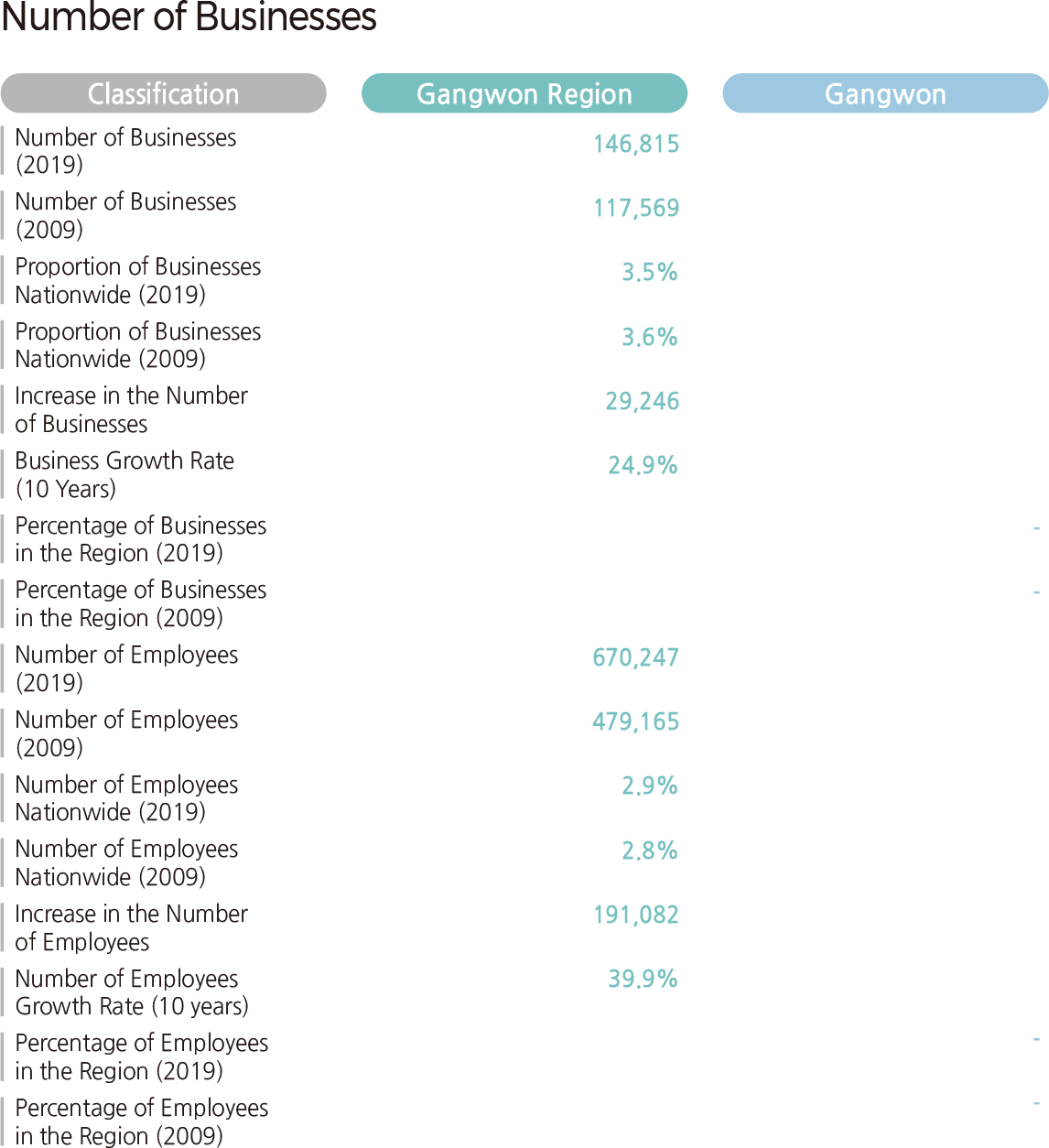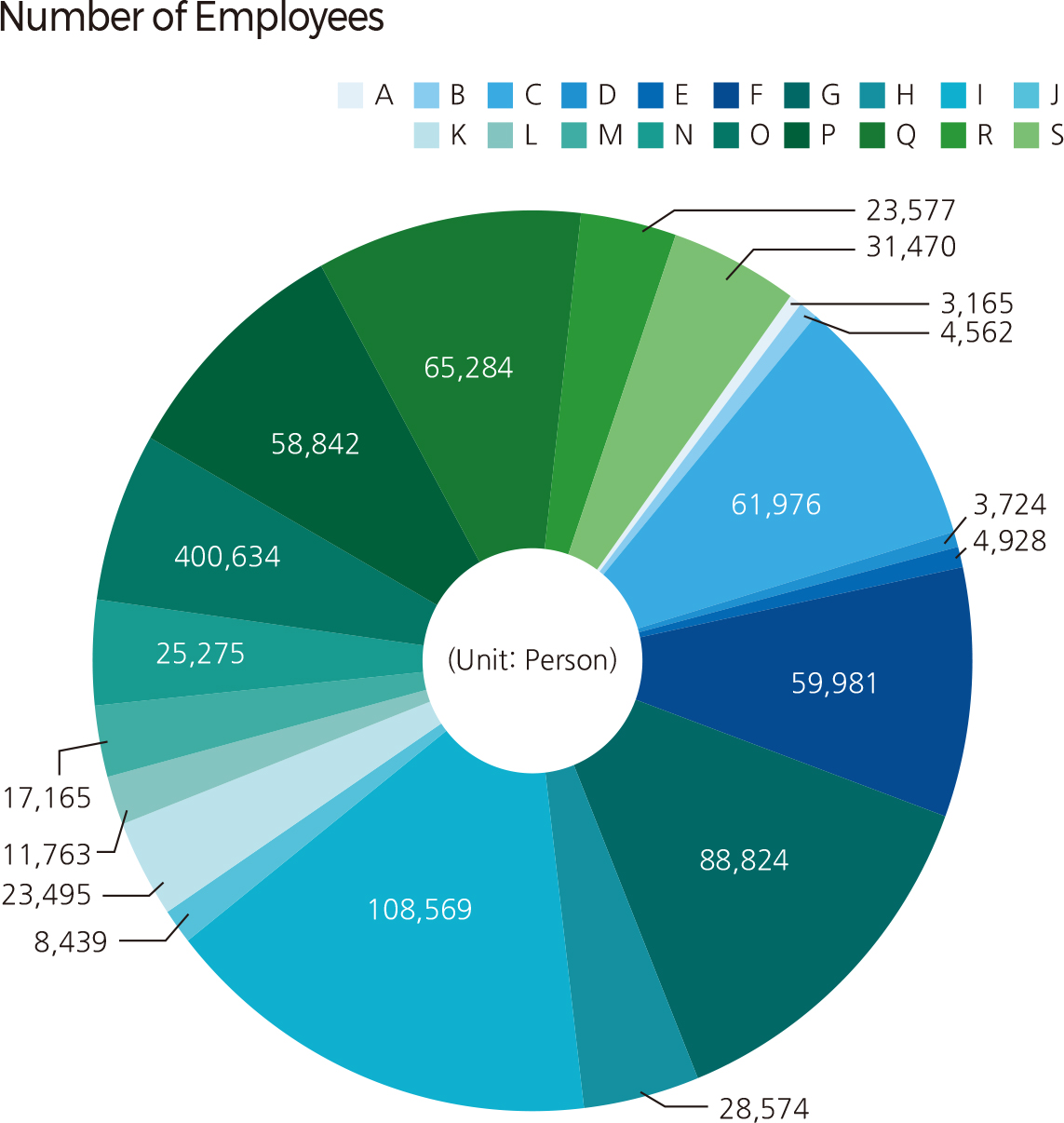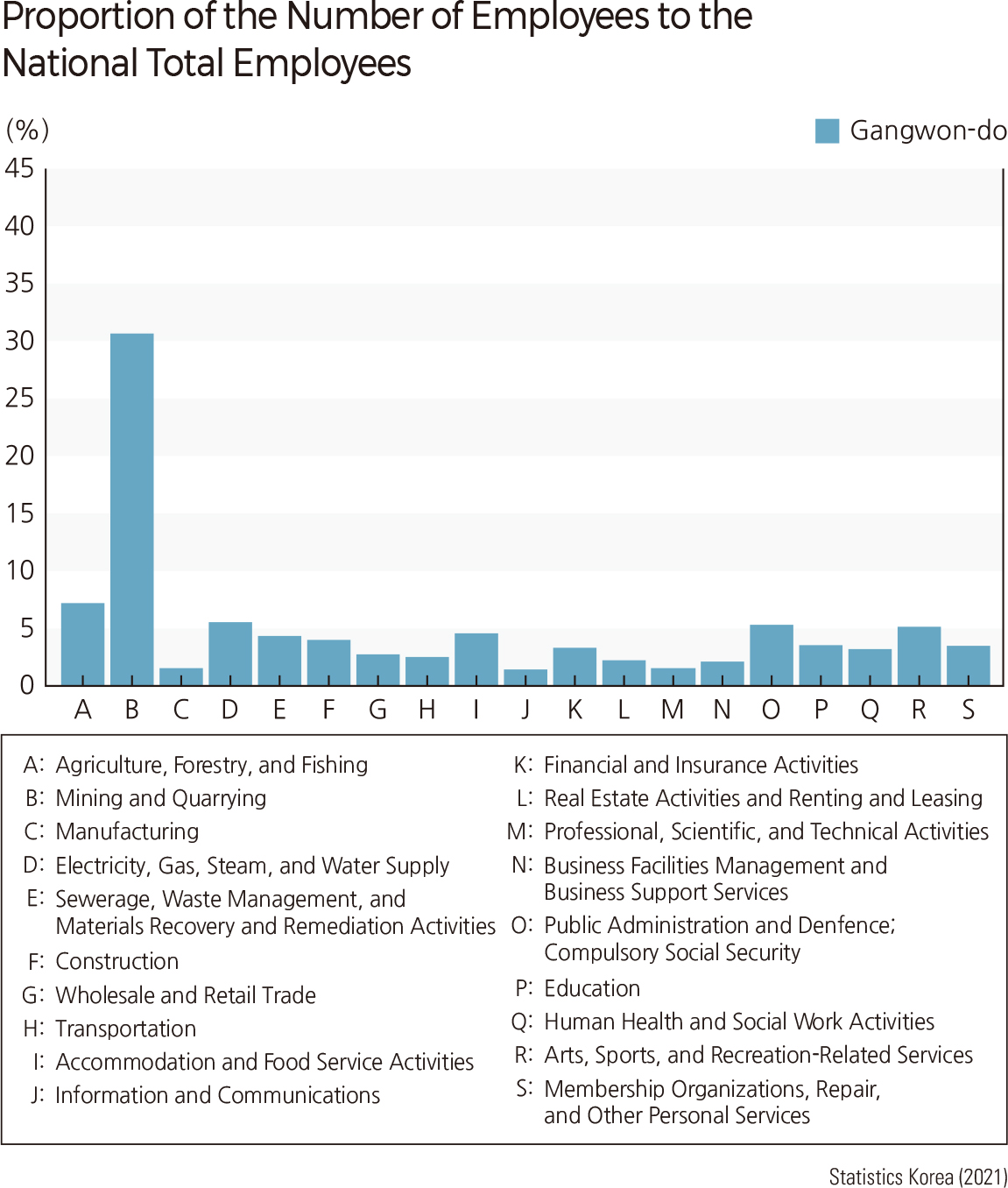English III 2021
The Gangwon region is composed of Gangwon-do. It borders with the mountainous terrains of the eastern part of Gyeonggi-do and the northern parts of Chungcheongbuk-do and Gyeongsangbuk-do. A mountain range stretching north-south divides this region into Yeongdong and Yeongseo regions. The Yeongseo region is located in the same watershed as the Seoul Metropolitan Area and has different climatic characteristics from the Yeongdong region. There are five national and 248 local rivers in Gangwon-do, where the headwaters of Hangang and Nakdonggang are located. Despite the mountainous terrain, ten dams (three multi-purpose dams, two water supply dams, and five power generation dams) built upstream of the river secure water resources equivalent to 30% of the nation’s freshwater. These dams play an important role in flood prevention and supply water resources to the Seoul Metropolitan Area. The government will establish a smart water supply management system in Gangwon-do from 2021 to resolve the increase in the unit price of water resources and the supply gap between regions due to the low population density of Gangwon-do.
The Gangwon region has many railway lines to transport coal and metal minerals despite the difficulty of constructing railways due to its mountainous terrain. The freight rail network, such as the Jeongseon Line, Taebaek Line, Hambaek Line, Bukpyeong Line, Yeongdong Line, Mukho Port Line, and Samcheok Line, has been well developed. On the other hand, the passenger rail network was not properly built due to its mountainous terrain. However, the newly constructed Gyeongchun Line connecting Seoul and Chuncheon-si and the KTX line connecting Seoul and Gangneung-si greatly improved the passenger rail network in the Gangwon region. With the expansion of the Yeongdong Expressway built in the 1970s and the opening of the Gwangju-Wonju Expressway and the Seoul-Yangyang Expressway, an expressway network connecting the Gangwon region and the Seoul Metropolitan Area was established. The Jungang Expressway connecting Chuncheon-si, Wonju-si, and Jecheon-si is a transportation artery linking the north and south of the Yeongseo region. In the Yeongdong area, the Donghae Expressway connecting Gangneung-si, Donghae-si, and Samcheok-si served as an industrial road along with the Yeongdong Expressway. Furthermore, National Highway No. 7 along the east coast to Yangyang-Sokcho served as the main axis of the road network.
From 2018 to 2020, Gangneung City had 29.29 million, 32.82 million, and 31.4 million visitors, respectively. When looking at the residence of visitors by province, Gyeonggi-do (30.0%), Gangwon-do (27.4%), Seoul (22.3%), and Incheon (4.5%) accounted for 84.2% of the total visitors. In particular, since 2018, railroads have become the most popular means of public transportation for domestic tourists visiting Gangneung-si. The KTX Gangneung Line connecting Seoul Station and Donghae Station through Gangneung Station was first operated in December 2017 to support the 2018 Pyeongchang Winter Olympics. The line passes through the Gyeongbu Line (Seoul-Yongsan), Gyeongwon Line (Yongsan-Cheongnyangni), Jungang Line (Cheongnyangni-Seowonju), Gyeonggang Line (Seowonju-Gangneung), and Yeongdong Line (Gangneung-Donghae) sections. The monthly number of passengers of the Gyeonggang Line, the longest section of the KTX Gangneung Line, increased by 36%, from about 730,000 in January 2018 to about 990,000 in October 2019. Since January 2020, the average monthly number of passengers has been around 710,000 due to the outbreak of COVID-19, and there has been no sign of recovery.
As of October 2021, the Gangwon region has 75 industrial complexes, accounting for 6.0% of the total number of industrial complexes nationwide: one national industrial complex, 24 general industrial complexes, five urban high-tech industrial complexes, and 45 agro-industrial complexes. Agro-industrial complexes account for 60.0% of the total industrial complexes in this region. The proportion of agro-industrial complexes and general industrial complexes is higher than that of other metropolitan areas. The designated area for industrial complexes is 26 km2, which is 1.8% of the total industrial complex area nationwide. General industrial complexes account for 55.6% of the designated area, followed by agro-industrial complexes (27.3%). The number and designated area of industrial complexes were the highest in the early to mid-2010s (2010–2014). The oldest industrial complex is the Hupyeong General Industrial Complex in Chuncheon-si, designated in 1968. The -si/-gun areas with the largest number of designated industrial complexes are Chuncheon-si (16) and Wonju-si (10). Many industrial complexes are located in Chuncheon-si and Wonju-si adjacent to Gyeonggi-do and on the east coast. |
